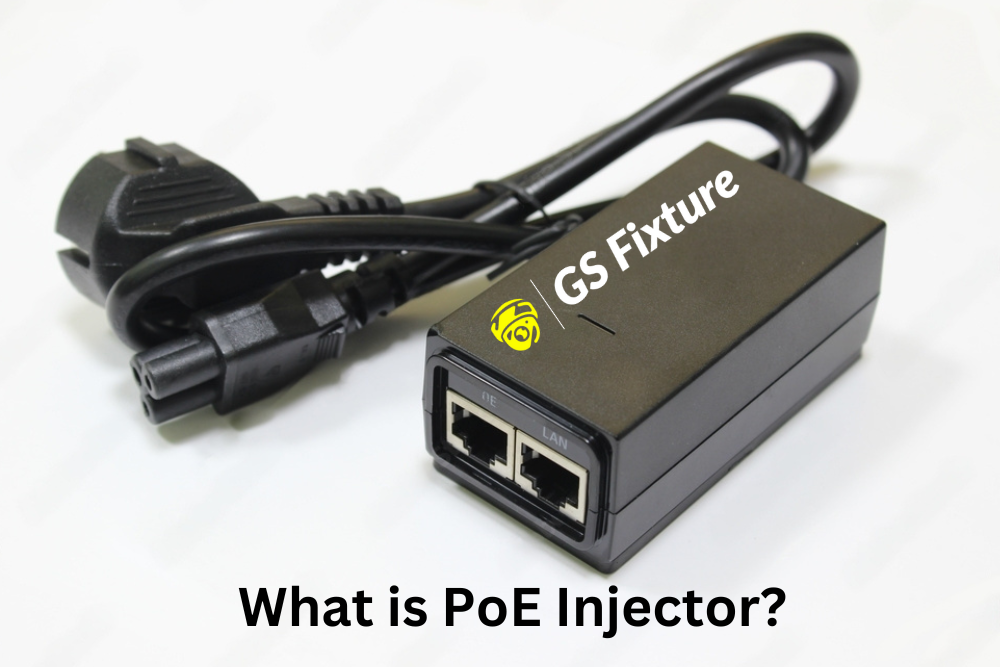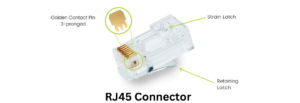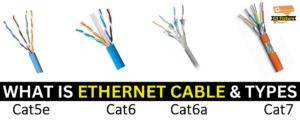What is PoE Injector?
A Power over Ethernet (PoE) injector is a device that provides power to Ethernet-enabled devices over a standard Ethernet cable. The device works by combining both power and data over the same cable, eliminating the need for a separate power source for devices such as Wi-Fi access points, IP cameras, or other networked devices.
PoE injectors typically consist of two parts: an AC/DC power adapter that connects to a wall outlet, and an Ethernet port that connects to the network cable. The device takes power from the wall outlet and injects it into the Ethernet cable, providing power to the connected device on the other end.
PoE injectors are commonly used in situations where there is limited access to power sources or when it is difficult to run separate power cables to networked devices. They provide a convenient and efficient way to provide power and data to networked devices over a single cable.
How To Use PoE Injector:
Using a Power over Ethernet (PoE) injector is relatively straightforward and can be done in the following steps:
1. Connect the AC/DC power adapter to a wall outlet: The first step is to connect the AC/DC power adapter of the PoE injector to a wall outlet. This provides the power source for the PoE injector.
2. Connect the Ethernet cable to the PoE injector: Next, connect one end of an Ethernet cable to the Ethernet port on the PoE injector. This cable will carry the data and power from the PoE injector to the connected device.
3. Connect the other end of the Ethernet cable to the device: Connect the other end of the Ethernet cable to the Ethernet port on the device that you want to power and provide data connectivity for.
4. Turn on the power: Turn on the power to the PoE injector by plugging in the AC/DC power adapter to the wall outlet. The connected device should now receive both data and power over the Ethernet cable.
5. Verify the connection: You can verify the connection by checking the connected device’s power and data connectivity status. Some devices may have an LED indicator that shows whether they are receiving power, while others may have a network status indicator that shows if they are connected to the network.

Note: It is essential to verify that the PoE injector you are using is compatible with the device you want to connect, as not all PoE injectors are compatible with all devices. Some devices may require a specific type of PoE injector, such as 802.3af or 802.3at, while others may have different power requirements. Make sure to check the specifications of both the PoE injector and the connected device before making the connection.
Types Of PoE Injectors:
There are two main types of PoE injectors:
1. Passive PoE injectors.
Passive Power over Ethernet (PoE) injectors are basic PoE devices that provide power to Ethernet-enabled devices over a standard Ethernet cable. They do not have any intelligence or management capabilities and simply provide power over the Ethernet cable.
Pros And Cons.
Passive PoE injectors are simple and inexpensive, but they also come with some limitations. For example, they do not regulate the voltage or current, which means that the connected device may not receive enough power if it requires more than the standard amount of power provided by the injector. Additionally, passive PoE injectors do not have any protection mechanisms, which could potentially damage the connected device if the power supply is not properly managed.
2. Active PoE injectors:
Active Power over Ethernet (PoE) injectors are advanced PoE devices that provide power and data to Ethernet-enabled devices over a standard Ethernet cable. They offer more advanced features than passive PoE injectors, such as power management, voltage regulation, and current limiting.
Pros And cons.
One of the key advantages of active PoE injectors is their ability to regulate the voltage and current, ensuring that the connected device receives the proper amount of power. This can be particularly important for devices that require more power than the standard amount provided by passive PoE injectors.
Active PoE injectors also provide protection mechanisms to prevent damage to the connected device in the event of power issues, such as over-voltage or over-current. This helps to ensure the longevity and reliability of both the PoE injector and the connected device.
Additionally, some active PoE injectors also provide advanced management features, such as power prioritization, which allows administrators to prioritize the power allocation to different devices on the network. This can be useful in situations where multiple devices are competing for the same power source.
Overall, active PoE injectors are a more advanced and reliable solution than passive PoE injectors, and they are commonly used in enterprise and commercial environments where power management and protection are critical.
Advantages Of Using a Poe Injector?
There are several advantages to using a Power over Ethernet (PoE) injector:
1. Convenience:
PoE injectors allow you to provide power and data connectivity to devices over a single Ethernet cable, eliminating the need for separate power and data cables. This makes installation and maintenance easier and more convenient.
2. Cost savings:
Using a PoE injector can help reduce the costs associated with running separate power and data cables. This is especially true in situations where it is difficult or expensive to install electrical outlets near the device.
3. Flexibility:
PoE injectors allow you to provide power to devices in places where there are no electrical outlets or where it is not feasible to run separate power cables. This provides greater flexibility in the placement and installation of devices.
4. Increased reliability:
PoE injectors can help increase the reliability of the power supply to the device, as they often include voltage regulation and current limiting features that help prevent power issues such as over-voltage or over-current.
5. Easy installation:
PoE injectors are easy to install and require only a single Ethernet cable to connect the device. This makes them a convenient solution for quickly providing power and data connectivity to devices in a network.
6. Power prioritization:
Some advanced PoE injectors offer power prioritization features that allow administrators to control the allocation of power to different devices on the network. This can be useful in situations where multiple devices are competing for the same power source.
Overall, PoE injectors provide a convenient, cost-effective, and flexible solution for powering and providing data connectivity to Ethernet-enabled devices, making them a popular choice for many users and organizations.


